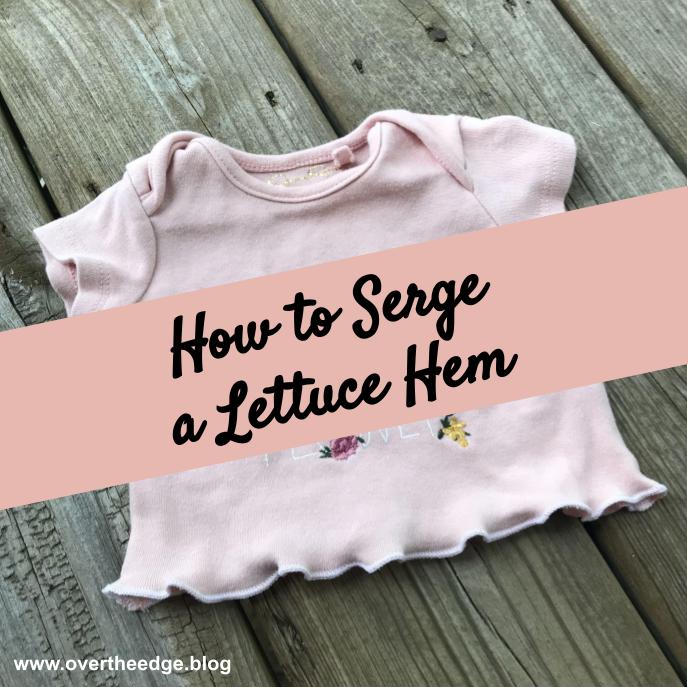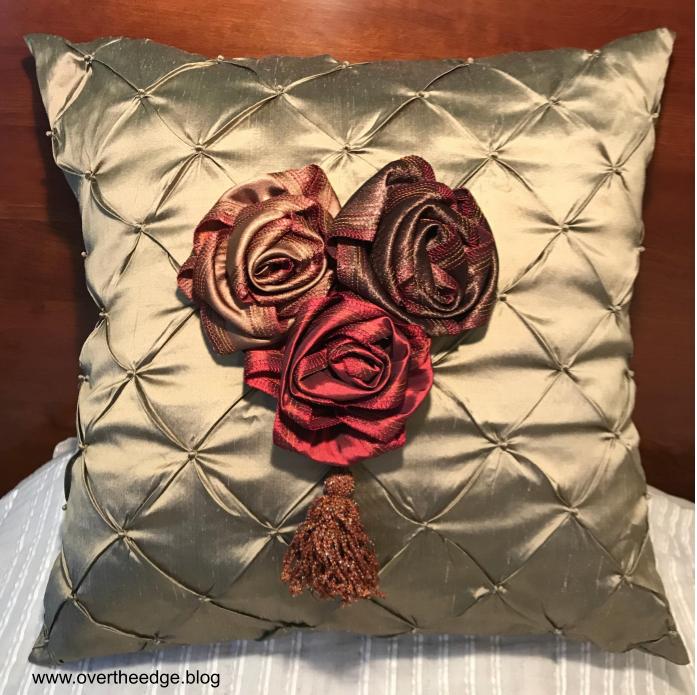How to Serge a Lettuce Hem
Serge a lettuce hem quickly and easily using a three thread rolled or narrow hem stitch. You only need a few things to create this lovely hem: a serger with a rolled hem stitch, some thread and a piece of knit fabric.
Lettuce Hems Using a Serger
Can you guess why this ruffled hem is called a lettuce hem? Maybe because the edge of the fabric waves and curls like the edges of a lettuce leaf?!
The lettuce hem is created by stretching the fabric as you serge the edge. It can be used on the edges of light to medium weight knit fabrics. The greater the stretch of the fabric, the more the hem waves and curls. I use this technique to transform the hems on t-shirts, scarves and more.
Which Serger Stitch to Use for a Lettuce Hem?
I’ve used two similar (but different) stitches to serge a lettuce hem. Both the 3 thread rolled hem and the 3 thread narrow hem will work. Both are tiny hems. The serger is threaded the same way for both stitches, but the tension settings are different. Consult your manual for how to set up your serger for these stitches. On my serger the stitch selector is set on “D” for a rolled hem and “C” for a narrow hem. Click on the link to my napkin tutorial below for more details about the difference between the rolled hem and narrow hem. https://overtheedge.blog/tutorials/quick-easy-serger-napkins/
How to Stretch the Fabric as you Serge
Some people use the differential feed on their serger to create some extra stretch in their hems. Adjusting your differential feed to a setting less than 1 will create some stretch in your fabric as it feeds through the serger.
Others prefer to stretch the fabric manually. Keep your differential setting at normal (N or 1). Gently and equally stretch the fabric in front of and behind the needles as you serge, but let the feed dogs move the fabric. You will need to stop and reposition your hands as you serge around your fabric. If you try to pull the fabric through as you serge you may cause the needles to bend or break.
For my lettuce hem baby tees I had better results when I stretched the fabric manually.
Serge a Too Cute Tee from a Too Short Onesie
My granddaughter was gifted a bunch of really cute newborn onesies when she was born. But she grew out of them very quickly. The onesies were too cute to put away, so I turned the too short onesies into too cute tees! I guess you could call this a quick and easy “onesie refashion” project.
I started by cutting the onesie off at the leg openings.
Next I set up my Baby Lock Evolution serger for a 3 thread narrow hem (stitch setting C) and a stitch length of 1.5. I used Maxi Lock thread, but you could choose more decorative thread for your loopers if you desire.
I serged the bottom hem of the t-shirt in the round, trimming off just a slight amount of fabric and stretching the fabric in front of and behind the needle.
After serging, I gave the hem a good stretch to help it “lettuce” even more. Then I buried the thread tails in the hem and trimmed off the extra thread tails.
Isn’t she a cute little wildflower in her new t-shirt?!
Now my granddaughter can get a little more use out of those too short onesies as too cute tees!

Resources
https://babylock.com/learn-and-create/projects/frilly-fancy-scarf A lettuce hem project from Baby Lock
https://youtu.be/MtKHzCM0Uhk Serge a lettuce hem on Baby Lock Vibrant
















